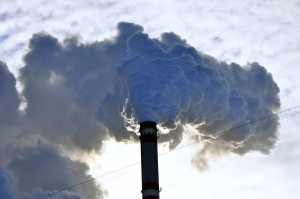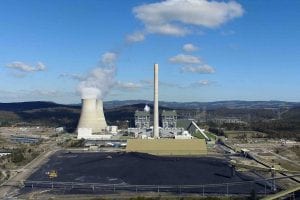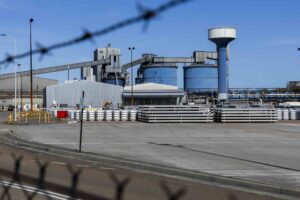One of the most stunning comments to come from the coal industry in the ABC TV’s 7.30 investigation into carbon capture and storage this week was not the admission that the technology would not be commercially viable for at least another two decades. That much is known. It was the contention from the coal industry that it believes it has no obligation to increase its contribution to funding the development of the only technology that it says would appear capable of guaranteeing its future.
“If you want to wait for the carbon price to rise to levels where these will be commercially viable we’re probably into the 2030s,” Dick Wells, the chairman of the National Low Emissions Coal Council, told the program. “The question is how you fix that financial gap. How do you get the biggest bang for the buck for taxpayers’ dollars in filling that gap? Because in the absence of it, companies with shareholders – I mean, people have their superannuation with these companies – aren’t going to do things which aren’t sensible commercially.”
Coal companies are not the only ones with shareholders. Renewables companies have them too, even solar companies. So do the biggest industrial companies in the world, such as GE or Siemens, and myriad others. They all believe that investment in R&D is a necessity to guarantee their future. It seems, though, that Wells believes the coal industry should take a leaf out of the Kodak business manual for self destruction.
R&D and the development of new technologies is inherently expensive. Most of the large industrial companies in the world spend between 3 and 5 per cent of their revenues on R&D and investing in new technologies. Because, as the head of Samsung noted last year, most of what they have now won’t be worth much in a decade or two. This is the lesson that Kodak failed to absorb – it feared the cost of developing digital technology (which it had apparently invented) – and so it went bankrupt, because other companies saw that their shareholder interests were best served by investing in a new technology.
This scenario is now being played out in the energy sector. The percentage of revenue invested by renewables companies, particularly those in the solar sector, is considerably higher. But the coal industry, despite its near $1 trillion of annual global revenues, chooses to invest less than one tenth of one per cent in the technology that could best secure the place of coal in a low-carbon economy.
It seems a massive bet (of said shareholder funds) against a) the ability of other technologies to provide a reliable and cost-competitive solution over the same time frame; and/or b) the belief that governments will act to reduce emissions in accordance with the science, rather than what is currently “politically acceptable.”
This scenario, although a core part of the International Energy Agency’s 2011 World Energy Outlook, is not factored in to either the Australian government’s draft energy white paper, or other independent assessments – not even the otherwise excellent Grattan Institute report that was recently released. Just to recap on the IEA report, its message was that unless governments act now to reduce emissions, and attempt to meet the 450 parts per million target that is regarded by scientists as the benchmark to give the world half a chance of escaping runaway global warming, then by 2017 the global “carbon budget’ would disallow any new fossil fuel plants without the closure of another equivalent.
Such a scenario seems improbable to most people, even though it is a choice that may need to be made within half a decade. But even a panicked reaction at half that scope would have major implications for these industries, their shareholders and their superannuation. This is one of the reasons for the formation of the Carbon Tracker Initiative in the UK, which is warning against the potential of systemic risk from the exposure of investors to carbon-intensive listed firms.
“As the recent IEA World Energy Outlook 2011 confirmed, only a fraction of these reserves can be exploited without busting the remaining “safe” global carbon budget,” it wrote in an update report released in London in January. It said that UK investors, through their pension plans, insurance policies or savings, will be exposed to this substantial carbon risk as their funds either passively track the market, or benchmark against it. And one third of the carbon exposure on the UK’s FTSE 100 came from the coal industry in Australia.
Carbon Tracker wrote to the Bank of England Mervyn King warning that “the depth and breadth of our collective financial exposure to high carbon, extractive and environmentally unsustainable investments could become a major problem as we transition to a low-carbon economy. Five of the top 10 FTSE 100 companies are almost exclusively high carbon and alone account for 25 per cent of the index’s entire market capitalisation.”
King wrote them a letter thanking them for raising “interesting issues” and suggesting that regulators could investigate whether exposure to fossil fuel-related assets pose a long-term risk to financial stability. He said this would need to meet several criteria. First, he said the exposures of financial institutions to carbon-intensive sectors would have to be large, relative to overall assets. Secondly, it would have to be demonstrated that the impact of policy and technology working to reduce returns in high carbon areas is not already being priced into the market assets; and then there would need to be evidence that any market correction would take place too quickly for financial institutions to adjust their portfolios.
“The necessity of all three conditions being met raises a question in our minds as to whether or not this is a potential threat to financial stability,” King wrote. “Nevertheless, there is clearly scope for further evaluation of these issues, in particular the potential scale of the risk and transmission mechanisms through which it might impact UK financial stability.”
In response to that, Ben Caldecott, head of policy at Climate Change Capital, and James Leaton, project director at the Carbon Tracker Initiative, said there was already evidence that King’s conditions for further investigation had been met.







